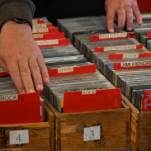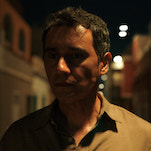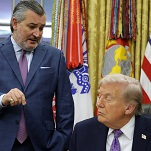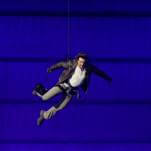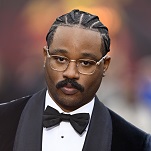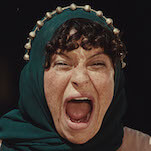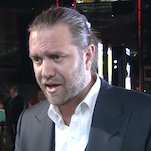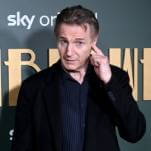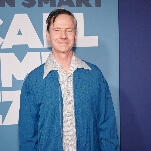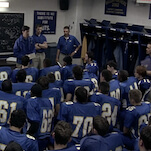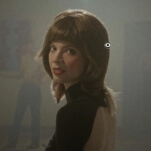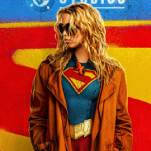Wrapped Up In Books is The A.V. Club's monthly book club. We're currently discussing this month's selection, John Crowley's Little, Big, in a series of posts to be followed by a livechat with staff and readers this afternoon at 3 p.m. CST.
When I first started reading Little, Big, the title loomed large in my observations. I kept seeing “clues” in the narrative: the idea of littleness vs. bigness repeated as a motif in the narrative, as though the entire concept of the book was “as above, so below.” The contrast between Smoky’s height and Daily Alice’s. Smoky’s musing over the difference between the huge, complicated real world and the dry, silent miniature version in the phonebook he’s proofreading. The similar contrast between the road he travels to get to his betrothed, and the arid, gelded portrayal he sees on the map he has to follow. Daily Alice’s family home, a collection of small sample fronts all assembled into one big monstrosity that isn’t really a single home. And so forth and so on. At the beginning, all these insights seemed significant.
And then I realized I was bookmarking practically every page as significant, which wasn’t going to be helpful when it came time to write down my thoughts. And I realized that the concept of size contrast was such an overwhelmingly huge one, so common in all aspects of life, as to render the observation pointless. It’s the kind of broad, generic observation that could be read into any book, and therefore it’s meaningless. I stopped marking pages, and I stopped thinking about it.
But I came back to it at the end, when I hit the concept of worlds within worlds within worlds within people, and the spaces that get bigger inside as they progressively seem smaller outside. Suddenly I was back to big vs. little as being the key to the book, not in contrast to each other, but as reflective parts of the same whole.
This kind of big philosophical concept is a lot of the reason I wound up respecting Little, Big, even as I didn’t much enjoy it as an experience. I found the romance of Smoky and Daily Alice mesmerizing—and then author John Crowley shunted it aside, skipped ahead a generation, and moved on. And that in a nutshell was my experience with the book, over and over. The fairies finally reveal themselves and steal Lilac away? That’s gripping stuff. And then Crowley jumps decades into the future, without addressing what this did to the family, only coming back to it much later. The story about the mouse learning about the concept of winter was adorable, but Crowley cuts away from it and never comes back. I was absorbed with August’s predicament as the recipient of a blessing that’s a curse that he brought upon himself, but then he disappears from the story, an apparent suicide, and doesn’t come back until the end of the book, and even then, only via an elliptical reveal that might easily be missed. Over and over, Crowley pulled me into fragments of the Tale and then revealed them as only fragments, generally with no ending and sometimes with no beginning and no clear relevance.
I respect ambition in stories, and I admire the governing concept I see in Little, Big, the idea—there’s that motif again—that all the little personal stories are in a way irrelevant, tiny pieces of a larger, more significant whole, and therefore that the little details, like who raised Russell Eigenblick to take over the country, and to what exact purpose, don’t really matter.
But at the same time, I found it infinitely frustrating to be offered all these fragments of stories, and all the concomitant questions, without having those questions answered. I have no doubt that this is intentional on Crowley’s part. I have no doubt that he’s addressing the reader directly with this quote from the tremendously vast and powerful fairy Mrs. Underhill, in response to Eigenblick’s frustrated “Why?” at the end of the book:
“Why, for goodness’ sake,” Mrs. Underhill had said. “why, why. Why does the world need three sexes, when one of them doesn’t help out? Why are there twenty-four kinds of dreams and not twenty-five? Why is there always an even number of ladybugs in the world and not an odd, an odd number of stars visible and not an even?… Why is the world as it is and not different? If you had the answer to that, you wouldn’t be here now asking it. Now do calm yourself.”
In other words, dear reader, you don’t need to know. That isn’t what the story is about. The Tale is concerned with bigger things. I’m convinced that Crowley is getting at the same thing with his curious convention of capitalizing “Somehow” whenever he uses it—to point out that when something inexplicable happens, it’s all part of the Tale, and it’s all a mark of those invisible, unknowable behind-the-scenes fairies working in concert, to incomprehensible ends, for incomprehensible purposes. Nothing is coincidence; everything is intended, both on the little scale of the people in the story and on the big scale of Crowley’s book itself. As Ariel Hawksquill thinks of it, the people in this book are on the order of mice trying to decide who should get to run the kitchen. And the mice will never grasp more than a fraction of what’s going on in the house.
And yet. Clever as the conceit is—and clever as the idea is of letting readers know that they’re only seeing the human side of the story, while the real game is being determined on the fairy side, such that we only have half the puzzle pieces and can only put together half of the final image—I wound up feeling it was accordingly losing half of my interest. As an intellectual puzzle, Little, Big is a treat, full of sentences that have to be unraveled and picked apart to get to their meanings, and words I had to look up (operose, phthisical, milliards), and stories like August’s with threads that disappear and reappear, and parallels that drift down through generations and remind us of the same concepts over and over, building up to the ending.
And then there are all the classical references to be mulled over, like Tacey, Lucy, and Lily sewing together, and essentially becoming the three Fates. And what are we to make of Auberon and Sylvia, also known in childhood as Titania? After her nickname was revealed, I suspected that the two of them were Oberon and Titania, and the whole purpose of the fairies’ work was to bring them together again at the right time and in the right place for them to remember themselves after their long, forgetful idyll in the human world. Given their scene together at the end, when she reminds him of her nickname and “gifts” him with “two handsome, broad, ridged and exquisitely recurving horns, heavy and brave as a crown,” I still suspect this is the case. (Which is my answer to your question, Ellen; I think in that moment, in that inner landscape, Sylvia remembered who she really was, and showed her lover who he’d been.) But as with the revelation of Grandfather Trout’s identity, Crowley doesn’t deign to spell it out.
But as much as the book engaged my brain, it generally failed to touch my emotions. I was in and out of the story the whole way through, getting pulled in briefly by those fragments of coherent tale—Auberon and Sylvia’s relationship, say, or the story about what happened to the fake Lilac, or Ariel’s desperate attempt to escape the train with the Tarot cards—but added all together, it often became a frustrating slog. As soon as I came to care about any individual characters, the book would leave them behind and move on. Long segments, particularly the ones dealing with Hawksquill or Eigenblick, completely failed to grab my interest, given their limited connection with the rest of the book, or with any sort of humanity I cared about.
And the language that Leonard admires so much, I often found a trial, as I had to read sentences over and over to get past seeming double meanings and figure out where they were trying to go. Many paragraphs, I read two or three times before I actually picked up any meaning at all. And when I finally got to the end, I was frustrated to have come so far and hit such a teasingly oblique dead end at the last. It’s no doubt appropriate to the book if all the joy is in the journey and there really isn’t a conclusion, but that conceit wasn’t to my personal tastes in the way it was to Donna’s.
Granted, I was right there with her in thinking of The Last Battle, and the “Further up and further in!” exhortation. I thought of Narnia a lot while reading this book, just as I thought a lot of Jonathan Strange & Mr. Norrell, another dense, highly stylized book that takes a good bit of thought to get through, and that deals with the incomprehensibility of fairies, and a story where we largely see the human side of things, while magical forces on the other side shape destiny according to their own weird whims. But while I admired Little, Big as a puzzlebox right up to the end (hey look, the little/big, as above/so below motif continues still further, from Ariel and Smoky’s universe-reflecting orreys to the family-reflecting Tarot cards to the little/big interior worlds the family retreats into!) I wound up wishing for Jonathan Strange’s solid, conventional commitment to a few well-drawn characters, a single (albeit dense, layered, and many-threaded) story, and a satisfying ending.
Which is as much a personal reaction as Donna’s is. If it comes down to a choice—and in the best cases, it doesn’t, but on the off hand that it does—I’d rather a book that emotionally engages me than one that latches onto my brain and leaves my heart alone. And a book that withholds its epiphanies and satisfying conclusions is highly unlikely to grab me on an emotional level. I’d far rather read a really good Tale than read about what it’s like to be caught up and confused on the edges of one.


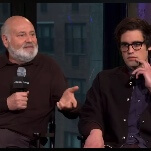

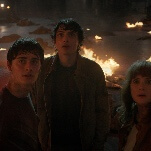
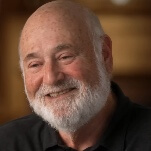
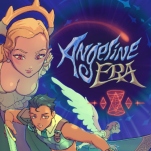
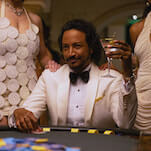

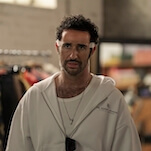
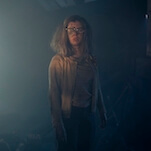
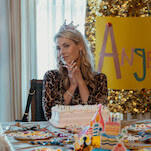
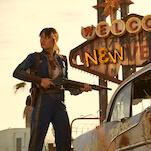
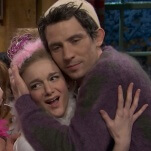
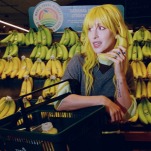




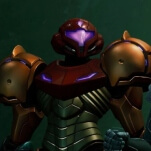
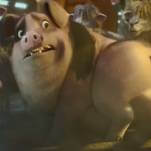
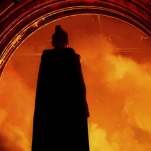

![HBO teases new Euphoria, Larry David, and much more in 2026 sizzle reel [Updated]](https://img.pastemagazine.com/wp-content/avuploads/2025/12/12100344/MixCollage-12-Dec-2025-09-56-AM-9137.jpg)
